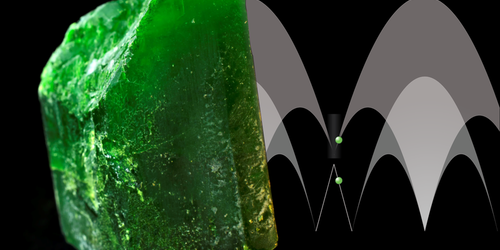Spinon Collisions Glimpsed in a Model Quantum System
At temperatures near absolute zero, some magnetic materials transition into an exotic phase of matter known as a quantum spin liquid, where the spin distribution lacks order. To understand the behavior of these materials, researchers study model systems called quantum spin chains that share properties with quantum spin liquids. Quantum spin chains can sustain certain quasiparticles—whose interactions physicists want to better understand. Now, Kirill Povarov of the Swiss Federal Institute of Technology, Zurich, and colleagues make the first observation of a predicted interaction between certain quasiparticles in the material [1].
A quantum spin chain is a 1D array of localized spins that harbors unusual excitations, such as quasiparticles called spinons, which always occur in pairs. In previous theoretical work, researchers predicted that spinon interactions could influence a quantum spin chain’s energy spectrum in a magnetic field. Specifically, when two spinons collide, the collision is predicted to influence, under certain conditions, the precession of spins in the chain. The result is a shift in the material’s energy states.
Using magnetic resonance spectroscopy, Povarov and his colleagues observed this predicted shift in the quantum spin chain material . In future work, the team plans to look for signatures of quasiparticle interactions in more complex materials that have higher-dimensional spin arrays.
–Sophia Chen
Sophia Chen is a freelance science writer based in Columbus, Ohio.
References
- K. Y. Povarov et al., “Electron spin resonance of the interacting spinon liquid,” Phys. Rev. Lett. 128, 187202 (2022).




